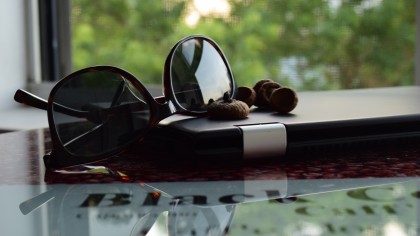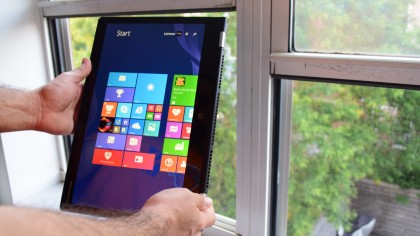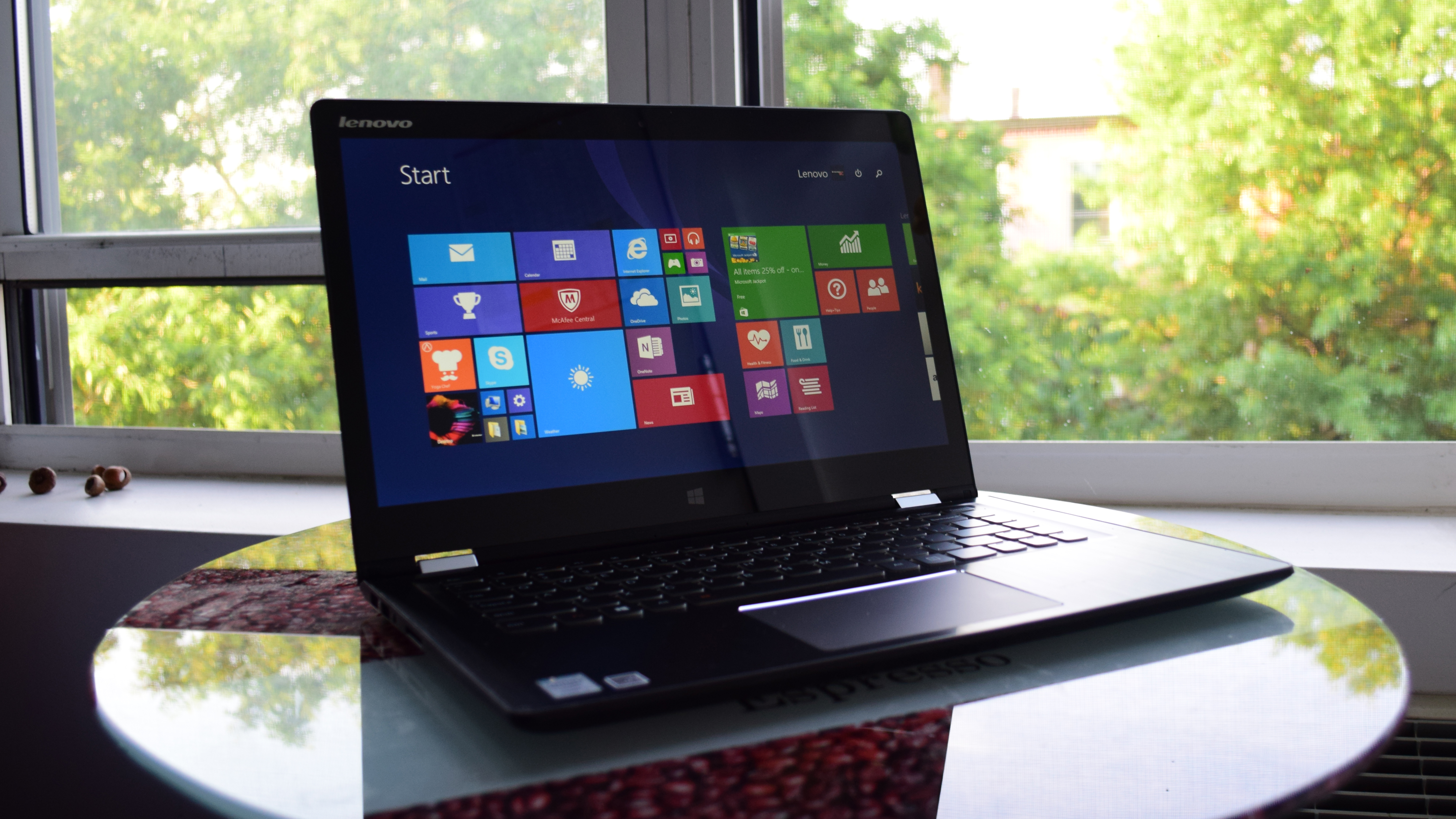TechRadar Verdict
If you're a fan of Lenovo's Yoga 3 Pro, and you don't mind sacrificing portability for a bit more power, then the Yoga 3 14 is a safe bet. But if you're going for optimum performance, you might want to consider other more powerful hybrids.
Pros
- +
Sleek design
- +
Long battery life
- +
Flexibility
Cons
- -
Poor performance
- -
Heavy weight
Why you can trust TechRadar
The Lenovo Yoga 3 14 (starting at $799, £649.99, AU$1,299) is a more powerful version of the incredibly popular Lenovo Yoga 3 Pro (starting at $1,099, £1,099, AUS$1,254). Both laptops feature a 360-degree hinge that can be rotated from a closed position to a fully open tablet position.
This flexibility, which Lenovo helped pioneer, created a new category of 2-in-1 or hybrid laptops that can be used in a traditional manner (i.e. with a keyboard) or as a standalone touchscreen tablet. The hybrid market, which is full of incredible laptops, is led by the stellar Microsoft Surface Pro 3 (starting at $799, £639, AU$979), and other notable devices, like the Asus Transformer Book Chi T300 ($899, £601, AU$1,156).
Not to be outdone, Lenovo has a slew of fantastic devices that offer hybrid functionality, including the 11.6-inch Lenovo Yoga 11S (starting at $799, £599, AU$1,299) and the business-class Lenovo ThinkPad Yoga 12 ($845, £558, AU$1077).

Somewhere in the middle of this crowded marketplace sits the Yoga 3 14, a device that is as pretty as any of its competitors, but too heavy and too weak to outclass the field.
Design
The Lenovo Yoga 3 14 is built with a sleek plastic chassis that comes in a black, silver and white that feels ruggedized. Although the shell does gather plenty of dust and fingerprint smudges, it is gorgeous to look at and pleasant to touch. You probably won't want to drop this laptop – it only feels ruggedized – but it's definitely sturdy enough for everyday use and constant transport.
At 3.52 pounds (1.58kg), you likely won't want to lug this thing around with you to every appointment or meeting. Competitive devices on the market, such as the Surface Pro 3 (2.4 pounds with keyboard), Yoga 3 Pro (2.6 pounds) and the Transformer Book Chi T300 (3.14 pounds with keyboard) are noticeably lighter.
Don't be fooled though: the Yoga 3 14's larger format is also one of its virtues. At 13.18 x 9.03 x 0.72 inches (35 x 22 x 1.8cm, W x D x H), the Yoga is about an inch wider than the Chi and two inches wider than the Surface Pro 3. This will serve as a benefit to anyone who has to use the Yoga for work, or anyone who flips it over into tent mode or stand mode to watch movies or presentations on the crisp and vibrant full HD (1,920 x 1,080) screen.
The two metal hinges that allow you twist and bend the Yoga back and forth from tablet to laptop mode are sturdy and smooth. You won't need the Tin Man's grease to help you change positions, but you also won't feel as if one over-caffeinated nudge will send the upper panel flying off of the hinges.

Unfortunately, at 3.5 pounds and 13.18 inches, this device is way too heavy and wide to be used comfortably as a tablet. Don't worry: once you play with the device's keyboard and ClickPad, you won't feel the need to go into tablet mode. I've often been very critical of Lenovo's keyboards and pads, specifically the keyboards and TrackPads of the ThinkPad lineup, but you won't hear any complaints coming from me here.

This backlit beauty features chiclet-style keys that take up about half of the lower panel. The other half is dedicated to the flat and smooth ClickPad, which is outlined by a silver trim. Both the keys and the ClickPad are delightful to touch and view (in other words, they're light years ahead of the ThinkPad design).
